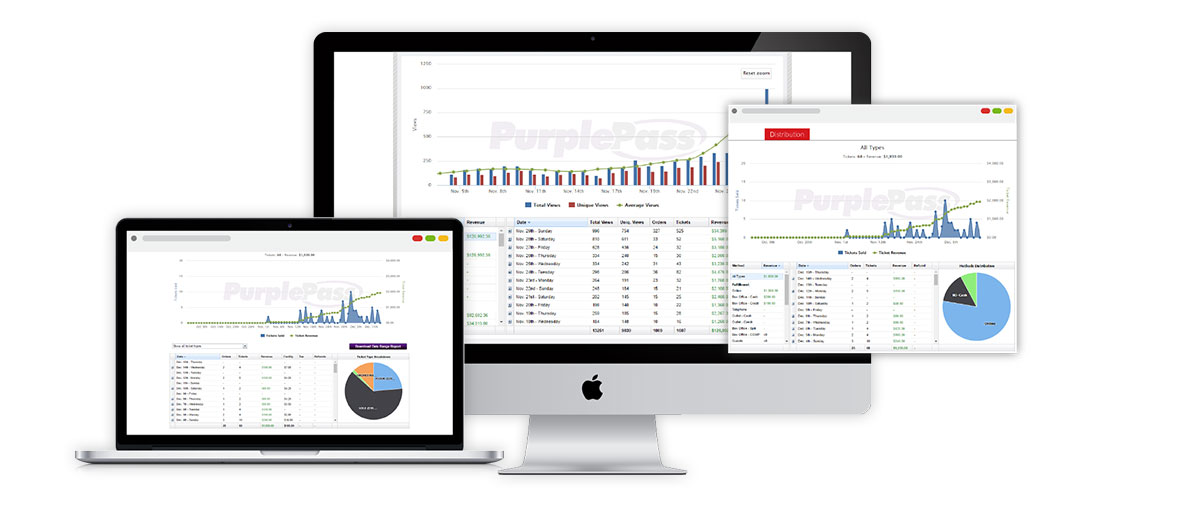Your Go-To Checklist for Each Phase of Event Planning
When a new event is thrown on your schedule, it's tough to know where to begin the planning process.
We’ve broken it down into nine phases to help you get things done in an order that makes sense. Check out the nine phases of event planning and how to slay each phase, one task at a time.

Phase 1: Determine why you’re having an event
To throw a successful event, understand the why behind what you’re doing. Research and understanding the goals of the event are vital parts of the planning process.
In this phase, you must:
- Brainstorm ideas for large-scale goals for your event, whether it’s a fundraising goal or providing a specific guest experience
- Meet with stakeholders in the event’s success to ensure they understand your vision
- Research competition and current running events similar to your own
Phase 2: Set realistic goals
Time to get specific.
In phase two, you must:
- Decide on specific goals. Don’t be ambiguous - nail out the nitty-gritty so you’ll be able to tell whether your event was a success.
- Determine how you will measure your goals and success post-event
Phase 3: Create a timeline and to-do lists
Now that you know where your event is headed, create a timeline that includes:
- Dates for all action items for the event (don’t worry - you can always add to these later)
- Delegations of who is responsible for each event planning task
-
A schedule for your event day (a rough draft of what it would look like for planning)
Your timeline is used not only to see everything you need to know, but how soon you need to do it.
Think of marketing and creating a launch plan, hiring staff and talent, finding a venue, etc.
For everything you need to do, write it out on a timeline with strict deadlines so you don’t miss anything.
Phase 4: Deal with the details
Now the real work starts - it’s time to get down to details.
In this phase, you must:
- Determine the event venue
- Determine event date, time, location
- Determine guest list/venue capacity
-
Choose all vendors (entertainment, catering, valet, etc.)
Phase 5: Determine your registration plan
Your guest list is done- now it’s time to decide how you will handle event registration online and at the gate. Now is the the time to think about outsourcing your registration.

While you can handle it yourself, it’s usually a headache, and information easily gets lost.
Using a registration company gives your guests a central website to use for all their event needs.
In this phase, you must:
- Decide how you’ll handle registration, whether that’s outsourcing or handling internally
- Determine ticket options, types and delivery
- Determine the cost for each guest
- Get your registration website up and running a few days before the event announcement (so you have time to work out any kinks)
- Cover payment methods and processing fees
- How do you want to get paid (merchant account, PayPal, etc.)?
|
Check registration off your list Request a demo now to set up, create and start selling |
Phase 6: Start marketing and create a launch plan
You’re already excited for your event - it’s time to get your potential guests in on the fun.
In this phase, you must:
- Create (or hire someone to create) paper and/ or digital invitations that provide guests with details and direct them to your registration site
- Determine your target market (in addition to a pre-determined guest list)
- Choose marketing platforms (Instagram, Facebook, Eventful, etc.)
- Develop a marketing calendar that shows what platforms will be targeted at what times
- Compile a list of past guests to target (email marketing, SMS messages, surveys, etc.)
While your marketing plan needs to be determined in advance, you also must check in regularly to make sure it’s working effectively.
If you aren’t getting the response you want from potential guests, you must reconfigure your marketing plan with a new approach to reach your target market.
Phase 7: Hire your team (staff, volunteers, interns, talent, vendors)
It’s time to put together your team.
In this phase, you’ll:
- Decide which staff members will fit into which roles (if currently staffed)
- Hire additional staff if necessary
- Recruit volunteers and/or interns
- List out all jobs you need covered at the event (parking attendee, cleanup crew, registration, etc.)
- Hold pre-event staff and volunteer meetings to go over responsibilities
Phase 8: It's time for the day-of-the event
The event has arrived!
It’s normal to feel a mix of excitement and anxiety as you get ready to show off all your hard work.
On event day, you must:
- Arrive at the site early to get in front of any hiccups
- Check-in with staff, volunteers, talent, vendors (also do all this the night before)
- Double check all equipment and do one last audio check if needed
- Confirm and finalize the event schedule
- Conduct one last meeting with your team and run through everything
- Make sure the event gate equipment is running properly (ticket scanners, mobile box office, etc.)
|
The night before your event checklist (FREE download) Download our free checklist to walk you through |
Phase 9: Post-event marketing and follow ups
After the event, it’s time to show others your success.
In phase nine, you’ll:
- Post pictures of the event to social media; share the experience
- Send out a post-event survey to guests to learn what they enjoyed and what could be improved on for the following year
- Hold a meeting with your staff (include volunteers) to discuss what went well and what needs to change for next year
- Send out a feedback survey to your team/volunteers
- Opt people into your SMS Messaging services
Phase 10: Analyze your results
The event is over- congrats!

In this phase, you must:
- See where you landed with your goals - this will help direct your goals for the following year
- Measure results, revenue
- Adjust your budget for next year (did you go over, under, need more funding, etc.)








